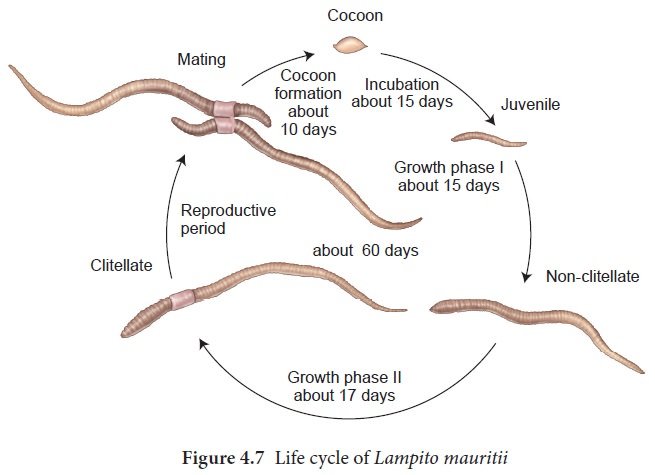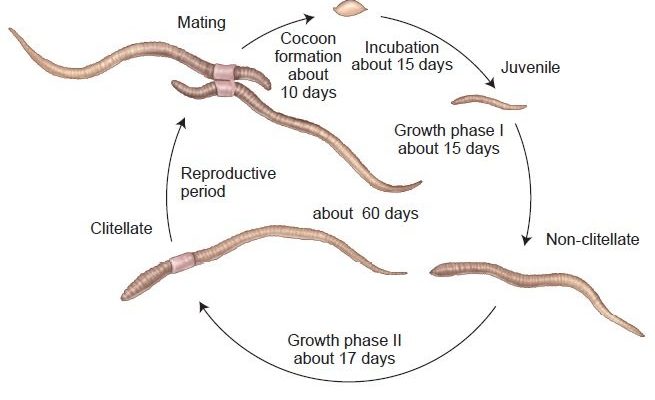
Imagine a tiny, squiggly creature wiggling through the mud. That’s the mudworm for you! From its early beginnings as a mere egg to its transformation into a skilled burrower, each stage is crucial. The mudworm belongs to the *Polychaeta* class, often found in marine environments. This article will break down the life cycle of the mudworm, focusing on its various stages and intriguing behaviors throughout its life.
Life Cycle Stages of the Mudworm
Understanding the life cycle of the mudworm involves a few distinct stages: egg, larva, juvenile, and adult. Each of these phases has unique characteristics and behaviors that are vital for survival and reproduction.
Egg Stage
The journey of a mudworm begins with its eggs. Female mudworms lay thousands of tiny eggs in the sediment, usually during the warmer months. These eggs are often bundled together, making them look like small clusters of jelly. This strategy ensures that at least some eggs survive the various threats from predators and environmental changes.
You might be wondering how long these eggs take to hatch. Generally, it can take about 2 to 3 weeks before the larvae emerge. This timing aligns with seasonal conditions, optimizing the chances for survival as warmer waters often mean more food sources for young mudworms.
Larval Stage
Once the eggs hatch, they release free-swimming larvae known as trochophore larvae. At this point, the mudworm larvae are quite different from their adult forms. They are tiny, transparent, and have cilia that help them swim. This swimming phase is critical because it allows mudworm larvae to disperse over a wide area, increasing their chances of finding a suitable habitat.
During this stage, these larvae will start feeding on plankton and other microorganisms, getting the nutrients they need to grow. After a few weeks, the larvae will settle on the seafloor and begin their transformation into juvenile mudworms. They quickly start developing the characteristic features of adult mudworms, like segments and bristles.
Juvenile Stage
As the larvae settle, they enter the juvenile stage. Here, things get exciting. Juvenile mudworms begin burrowing into the sediment, which is their preferred habitat. They have developed a simple but effective mouth that allows them to feed on organic matter found in the mud and sand.
During this phase, the mudworms start to develop their distinct body segments and bristles. You’ll often find them wriggling around in the mud, helping aerate the sediment—a bit like furry little engineers! This behavior not only aids in their survival but also benefits the ecosystem by enhancing the quality of the sediment for other organisms.
Adult Stage
After several weeks to months, the mudworm reaches maturity and becomes an adult. At this point, they can grow up to several inches long, depending on the species. Adult mudworms are equipped with a more complex anatomy, including specialized organs for reproduction.
During the breeding season, adult mudworms engage in a fascinating courtship ritual, where they often display vibrant colors to attract mates. After mating, females lay their eggs, and the cycle begins anew. This stage is crucial because the mudworm’s ability to reproduce ensures that the species continues to thrive, contributing to the overall health of its habitat.
Behavioral Traits of Mudworms
Besides their life stages, mudworms exhibit some interesting behaviors that help them survive and adapt to their environments. Understanding these behaviors helps paint a fuller picture of our squiggly friends.
Burrowing Habits
Mudworms are champions when it comes to burrowing. They create and maintain intricate tunnels in the sediment, which serve as their homes. This behavior is not just for shelter; it also protects them from predators and environmental changes. The tunnels help maintain a stable environment where conditions like temperature and salinity are favorable.
Here’s the thing—these burrows also play an essential role in the ecosystem. When mudworms burrow, they contribute to sediment mixing. This process helps distribute nutrients and supports various marine life forms.
Feeding Behavior
As detritivores, mudworms primarily feed on organic matter found in the sediment. They have learned to efficiently process decomposing plant and animal material, which helps recycle nutrients back into the ecosystem. You could think of them as nature’s recyclers!
Their feeding method is fascinating. They extend a specialized structure called a “proboscis” to suck up bits of organic matter. This ability to consume a wide range of materials makes them quite adaptable, which is a crucial trait for survival in varying conditions.
Responses to Environmental Changes
The mudworm’s resilience is impressive. They have adapted to tolerate different environmental conditions, such as changes in salinity or oxygen levels. For instance, if the water becomes too polluted or oxygen-poor, mudworms can either burrow deeper into the sediment to escape or lie dormant until the conditions improve.
This adaptability is vital in our changing climate. As habitats shift due to human activity or natural changes, mudworms demonstrate remarkable resilience, continuing their role in the ecosystem despite challenges.
The Ecological Importance of Mudworms
Understanding the life cycle of the mudworm isn’t just fascinating; it also underscores their critical role in the ecosystem. They serve as a food source for various animals, contribute to sediment health, and help maintain biodiversity.
Food Source for Marine Life
Mudworms provide essential nutrients for many marine animals. Predators such as fish, birds, and even larger invertebrates rely on mudworms as a food source. Their abundance helps support entire food webs, showcasing how interconnected life in marine ecosystems can be.
By serving as a food source, mudworms help sustain these species, thus maintaining the balance of marine life. If mudworm populations were to decline, it could have a ripple effect throughout the food chain.
Nutrient Cycling
Beyond being a food source, mudworms play a significant role in nutrient cycling within their habitats. As they consume organic matter and burrow through the sediment, they help redistribute nutrients, making them more available for other organisms.
This natural recycling process is crucial for maintaining healthy ecosystems. Healthy sediments promote the growth of plants, which in turn supports diverse marine life. By facilitating this cycle, mudworms contribute to the overall health of their environments.
Indicator Species
Mudworms are also considered indicator species, meaning their presence—or absence—can indicate the health of an ecosystem. Because they are sensitive to changes in their environments, changes in mudworm populations can signal larger environmental issues, such as pollution or habitat degradation.
Monitoring mudworm populations can provide valuable insights into the state of ecosystems and help guide conservation efforts. This makes them an important focus for scientists and ecologists who strive to maintain healthy marine environments.
The life cycle of the mudworm reveals a captivating story of growth and resilience. From their humble beginnings as tiny eggs to their vital roles in the ecosystem, these small creatures are packed with importance. Their behaviors—like burrowing and nutrient recycling—help sustain various marine life and maintain healthy sediments.
So, the next time you walk along the beach or think about the creatures living beneath the waves, remember the mudworm. These little squigglers might be small, but they are a big part of the marine puzzle. Whether you’re a science enthusiast or just curious about life in the mud, exploring the life of the mudworm opens a window into the wonders of our natural world.

